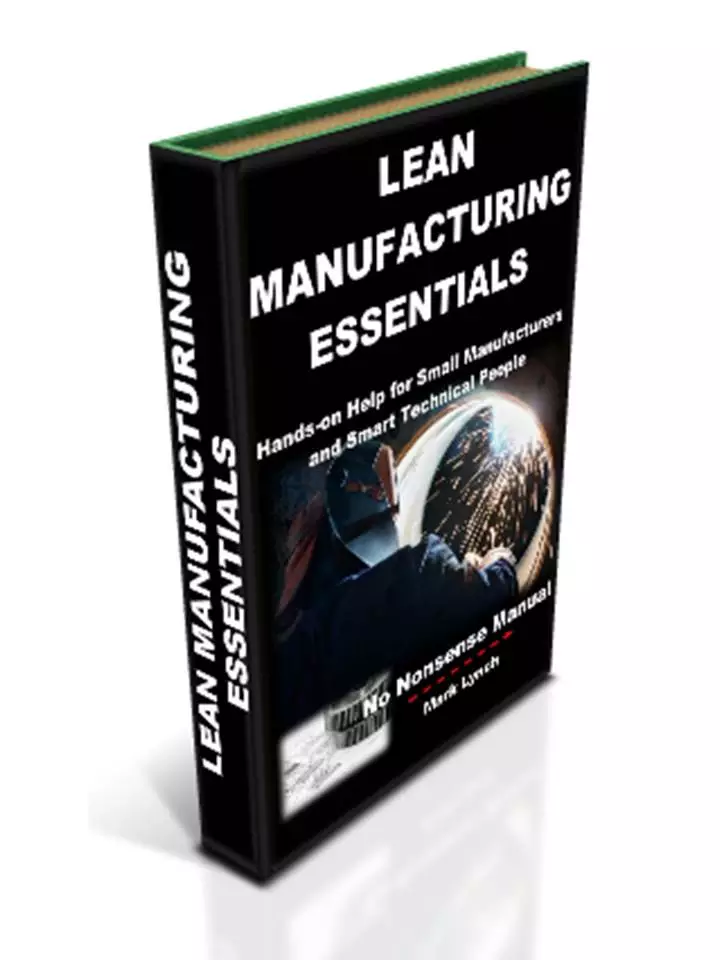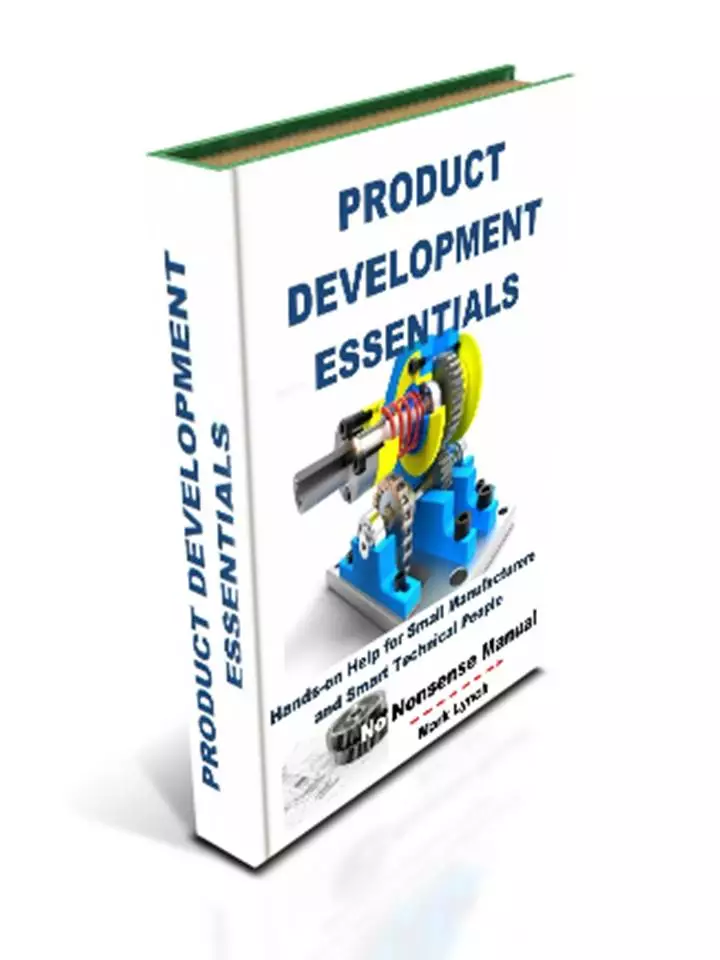'Hands-on Help for SMEs' and Smart Technical People'
A Small Business Practical
Sustainability Plan for Manufacturers
For small businesses with limited time and resources, practical help drafting and implementing a sustainability plan for manufacturers is a must...
Welcome to the dawn of a new era in manufacturing—a future where sustainable practices drive success, innovation, and long-term resilience. As a small manufacturing business, you hold the power to shape this transformative journey towards a greener, more responsible industry. Embracing sustainability is no longer a choice but a necessity, as consumers, investors, and regulatory bodies demand businesses to be stewards of the environment and society. However, delivery requires a comprehensive, yet tailored sustainability plan for manufacturers.
In this compelling guide, we unlock the secrets of why writing and implementing a sustainability plan is not just a moral obligation but a strategic imperative for your business. We will explore how sustainability drives profitability, fosters customer loyalty, attracts purpose-driven talent, and opens the door to a world of funding opportunities. Prepare to embark on a journey that goes beyond mere eco-friendly gestures but instead integrates sustainability into the very core of your business, revolutionizing your operations, products, and impact.
By developing a comprehensive sustainability plan for manufacturers, you will gain a competitive edge in an increasingly conscious market, future-proof your business against environmental challenges, and build a legacy that resonates with generations to come. Welcome to the world of sustainability—a path towards a brighter, more prosperous, and sustainable future for your small manufacturing business. Let's take the first step together towards a world of sustainable success!
So what does a great sustainability plan for manufacturers look and feel like?
A sustainability plan for manufacturers is a comprehensive roadmap that outlines specific strategies, targets, and actions to integrate sustainability principles into every aspect of their business. Here's how a great sustainability plan might look like. When reading the information below, consider how the points will be uniquly tailored and customiosed to yuour business and to your sector.
Vision and Mission Statement:
The plan should start with a clear and inspiring vision and mission statement that reflects the small manufacturer's commitment to sustainability. It should articulate the purpose and long-term goals of the sustainability plan, conveying the company's dedication to environmental stewardship and social responsibility.
Example 1: "At XYZ Manufacturing, our vision is to lead the industry as a sustainable and responsible manufacturing company. Our mission is to minimize our environmental footprint through energy-efficient practices, waste reduction, and responsible sourcing, while positively impacting our community and stakeholders."
Example 2: "At ABC Manufacturing, we envision a future where sustainable manufacturing practices are the norm. Our mission is to achieve carbon neutrality, embrace circular economy principles, and empower our employees and partners to drive positive change through sustainable innovation."
Baseline Assessment:
A thorough baseline assessment is crucial to understanding the current environmental and social impacts of the manufacturing processes. This assessment involves analyzing energy consumption, water usage, waste generation, carbon emissions, supply chain practices, and labor conditions. By identifying the existing sustainability performance, the small manufacturer can set realistic and achievable targets for improvement.
Example 1: Conduct an energy audit to assess the current energy consumption of the manufacturing facility, identifying areas for potential energy savings and efficiency improvements.
Example 2: Conduct a waste audit to analyze waste streams and identify opportunities for waste reduction, recycling, and circular economy practices.
Specific Sustainability Goals:
The sustainability plan should outline specific and measurable goals that align with the company's vision. These goals may include reducing energy consumption by a certain percentage, achieving zero waste to landfill, sourcing a certain percentage of materials from sustainable suppliers, or obtaining specific environmental certifications.
Example 1: Reduce energy consumption by 15% within the next two years by implementing energy-efficient lighting and optimizing equipment usage.
Example 2: Achieve zero waste to landfill by 2025 through improved waste segregation, recycling programs, and collaborating with suppliers to minimize packaging waste.
Actionable Strategies:
The plan should provide actionable strategies for achieving the sustainability goals. These strategies may involve implementing energy-efficient technologies, adopting circular economy principles, optimizing production processes, integrating renewable energy sources, and promoting sustainable materials and practices.
Example 1: Install energy-efficient LED lighting throughout the facility, implement an energy management system to monitor and control energy usage, and educate employees on energy-saving practices.
Example 2: Implement a closed-loop production system, where waste materials are collected, recycled, and reused in the manufacturing process, reducing reliance on virgin materials.
How to set up a sustainability strategy for manufacturers, by Makersite
Continuing with your comprehensive Sustainability Plan for Manufacturers, here are some additional considerations...
Resource Allocation and Budget:
An essential aspect of the plan is identifying the resources required for implementing sustainability initiatives and allocating a budget accordingly. This budget should include investments in energy-efficient equipment, training for employees, sustainability certifications, and any other necessary expenses.
Example 1: Allocate a budget for purchasing energy-efficient lighting and energy management system. Invest in employee training on energy conservation techniques.
Example 2: Allocate resources for setting up waste collection and recycling infrastructure, including the purchase of recycling bins and equipment for waste processing.
Timeline and Milestones:
The sustainability plan should have a clear timeline with specific milestones for achieving each goal. Breaking down the plan into manageable phases allows the small manufacturer to track progress and make adjustments as needed.
Example 1: Install energy-efficient lighting within the first quarter, complete employee training by the second quarter, and implement the energy management system within six months.
Example 2: Launch the closed-loop production system pilot within the first half of the year and expand it to cover 50% of production by the end of the year.
Employee Engagement and Training:
Engaging employees is vital to the success of the sustainability plan. The plan should outline how the company will communicate its sustainability vision to employees and provide training to build their capacity in sustainability practices. Engaged and knowledgeable employees are more likely to actively participate in sustainability initiatives.
Example 1: Conduct workshops and training sessions for employees on energy conservation practices and involve them in suggesting energy-saving ideas through an employee suggestion program.
Example 2: Educate employees about the importance of waste segregation and recycling, providing training on proper waste handling and recycling procedures.
Supply Chain Engagement:
The sustainability plan should address how the small manufacturer will engage with its supply chain partners to promote sustainable practices. This may involve encouraging suppliers to adhere to environmental and social standards, conducting supplier audits, and collaborating on joint sustainability projects.
Example 1: Engage with suppliers to prioritize sourcing of energy-efficient equipment and materials from sustainable sources.
Example 2: Collaborate with suppliers to explore packaging alternatives that are reusable, recyclable, or made from recycled materials.
How to create and implement a successful sustainability strategy, by SustainIt
The folllowing 4 people-orientatd points will further shape the comprehensive Sustainability Plan for Manufacturers...
Monitoring and Reporting:
An effective sustainability plan includes a robust monitoring and reporting mechanism to track progress towards the set goals. Regular monitoring helps identify areas that need improvement and enables the company to celebrate successes. Transparent reporting enhances credibility and builds trust with stakeholders.
Example 1: Regularly monitor energy consumption through the energy management system and report progress on energy-saving targets in quarterly sustainability reports.
Example 2: Track waste diversion rates and report on waste reduction progress in annual sustainability reports.
Continuous Improvement:
The sustainability plan should emphasize a commitment to continuous improvement. It should encourage the small manufacturer to review and update its strategies regularly, staying current with the latest sustainability trends, technologies, and best practices.
Example 1: Review and update energy-saving strategies based on feedback and lessons learned, continuously seeking opportunities for further improvement.
Example 2: Continuously evaluate and optimize the closed-loop production system based on performance and feedback from stakeholders.
Stakeholder Engagement:
The plan should highlight how the small manufacturer will engage with stakeholders, such as customers, investors, regulators, and local communities. Engaging stakeholders helps build support for sustainability initiatives and fosters collaboration and partnerships.
Example 1: Engage customers through marketing campaigns that highlight the company's sustainability initiatives and seek their feedback on sustainable product preferences.
Example 2: Collaborate with local communities and environmental organizations to raise awareness of the company's recycling efforts and involve them in waste collection drives.
Communication and Marketing:
An effective sustainability plan includes a communication and marketing strategy to share the company's sustainability achievements and initiatives with the public. Transparent communication builds brand reputation and attracts environmentally conscious customers.
Example 1: Use social media, website, and newsletters to communicate the company's sustainability progress and initiatives to customers and stakeholders.
Example 2: Incorporate sustainability messages into product packaging and marketing materials to demonstrate the company's commitment to sustainability to customers.
Sustainability 101: Building a Sustainability Plan, by Constellation
Finally these 2 stages help embed and integrate your sustainability plan deep within your business for the long term..
Recognition and Certifications:
Seek recognition for sustainability efforts through certifications and awards. Certifications like ISO 14001 (Environmental Management System) and B Corp status can validate the company's commitment to sustainability and enhance its reputation.
Example 1: Obtain ISO 14001 Certification
The small manufacturing business works diligently to improve its environmental management practices, implementing energy-efficient technologies and waste reduction initiatives. To further validate its commitment to sustainability, the company decides to pursue ISO 14001 certification, an internationally recognized standard for environmental management systems.
The company undergoes an audit process, conducted by a third-party certification body, to assess its environmental management practices against ISO 14001 requirements. After successfully meeting the criteria, the company achieves ISO 14001 certification.
The certification not only demonstrates the company's dedication to environmental responsibility but also enhances its credibility with customers, suppliers, and investors. It provides a competitive advantage, positioning the business as a trusted and environmentally conscious manufacturer in the industry.
Example 2: Attain B Corp Certification
A small manufacturing business is deeply committed to social and environmental impact. The company believes in using business as a force for good and seeks recognition for its efforts by obtaining B Corp certification.
To achieve B Corp certification, the company undergoes a rigorous assessment that evaluates its performance across various sustainability metrics, including governance, workers, community, environment, and customers. The company completes the B Impact Assessment, making necessary improvements in its sustainability practices along the way.
Upon meeting the high standards set by B Lab, the organization behind B Corp certification, the company is officially recognized as a B Corp. This certification distinguishes the company as a purpose-driven and socially responsible business that balances profit with a positive impact on people and the planet.
The B Corp certification aligns the company with a global community of like-minded businesses, fostering collaboration and partnerships. It attracts ethically conscious customers, investors, and employees who share the company's values and mission, ultimately contributing to its long-term success and positive societal impact.
Integration with Business Strategy:
Integrate sustainability into the company's overall business strategy. Embed sustainability considerations into decision-making processes, product development, and long-term planning. Aligning sustainability with the core business strategy ensures a holistic and enduring approach to sustainability.
Example 1: Sustainability-Driven Product Development
A small manufacturing business decides to integrate sustainability into its product development process. The company's sustainability plan emphasizes the use of eco-friendly materials and the reduction of the product's environmental footprint.
During the product development stage, the company collaborates with its R&D team and suppliers to identify sustainable materials that meet quality and performance requirements. The team considers factors such as recyclability, biodegradability, and lower carbon emissions during the material selection process.
As a result, the company successfully launches a new product that aligns with its sustainability goals and resonates with environmentally conscious consumers. The integration of sustainability in product development not only improves the company's environmental performance but also creates a competitive advantage in the market, attracting eco-minded customers.
Example 2: Long-Term Sustainability Vision
A small manufacturing business takes a proactive approach to integrate sustainability into its long-term business strategy. The company's sustainability plan includes a vision to become carbon neutral by a specific target year.
To achieve this vision, the company sets intermediate milestones and develops strategies to reduce its carbon emissions progressively. It invests in renewable energy sources, such as solar panels or wind turbines, to power its operations sustainably. The company also implements energy efficiency measures across its facilities, reducing its reliance on fossil fuels.
The integration of sustainability into the business strategy not only helps the company achieve its carbon-neutral goal but also drives cost savings through reduced energy consumption. The long-term sustainability vision inspires employees, customers, and stakeholders, fostering a strong sense of purpose and shared responsibility for environmental stewardship.
By integrating sustainability into the core of their business strategy, small manufacturers can ensure that sustainability remains a driving force behind their decisions, actions, and innovations, ultimately shaping a better, more sustainable future for their business and the planet.
In conclusion, a sustainability plan for manufacturers is a comprehensive and strategic document that reflects the company's commitment to sustainability. It sets clear goals, actionable strategies, and a timeline for implementation, while also emphasizing employee engagement, supply chain collaboration, and continuous improvement. With a well-crafted sustainability plan, small manufacturers can embrace sustainability as a core business principle, positioning themselves for long-term success, and positive contributions to the planet and society.
Back to Sustainable Business Help











